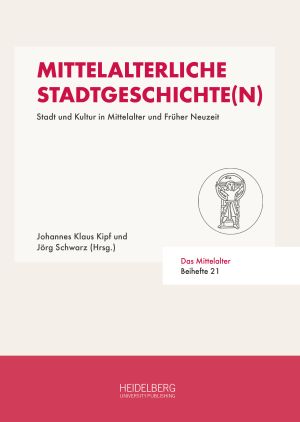How to Cite
License (Chapter)

This work is licensed under a Creative Commons Attribution-ShareAlike 4.0 International License.
Identifiers (Book)
Published
Städte in humanistischen Landesbeschreibungen und Chroniken
Biondo, Piccolomini, Foresti, Schedel
Abstract This article places the so-called ‘Schedelsche Weltchronik’ (or ‘Nuremberg Chronicle’) in a European context and asks about possible models, especially of Italian humanists like Biondo Flavio, Enea Silvio Piccolomini and Giacomo Filippo Foresti. Printed in 1493 in Latin and German versions, the ‘Schedelsche Weltchronik’ is a unique work of book art that is directly connected with cities in general and one city in particular, both in its creation and in its conception. Cities, each represented in image and text – in large-format woodcut views as well as literary descriptions –, are a central element of the structural and content-related conception in the ‘Schedelsche Weltchronik’. Not least thanks to these visually impressive city views, the work has enjoyed great and still-lasting fame. In the contradictory ‘interpretations’ of its place of origin, Nuremberg, the hybrid character of the ‘Schedelsche Weltchronik’, which is a result of medieval traditions on the one hand and humanist models on the other, becomes tangible.
Keywords Nuremberg; Hartmann Schedel; Enea Silvio Piccolomini; Biondo Flavio; Giacomo Filippo Foresti; cityscapes; Europe






